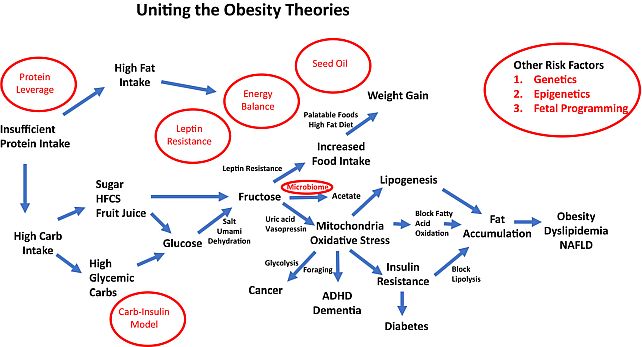A new paper proposes that fructose, a type of sugar, is the pernicious little demon responsible for driving many human metabolisms towards obesity. While it may not be the biggest source of caloric intake, it does trigger the urge to eat fattier foods in higher quantities, resulting in overindulgence.
A major analysis led by medical doctor Richard Johnson of the University of Colorado Anschutz Medical Campus suggests that losing weight may not require choosing between cutting carbs or fats, but rather responsibly reducing both together.
Unfortunately, having significant quantities of the carbohydrate fructose in your diet won’t make it easy to achieve this goal.
“Although most hypotheses recognize the importance of reducing ultraprocessed and ‘junk’ foods, it is still unclear whether the focus should be on reducing sugar intake, high glycemic carbohydrates, fats, polyunsaturated fats, or simply increasing protein intake,” the researchers write in their paper.
“Here, we review the various dietary hypotheses for obesity. We propose that all of these hypotheses are largely correct, and that despite appearing incompatible, they can all be unified based on another hypothesis known as the fructose survival hypothesis.”
Fructose is a type of sugar that can naturally be found in fruit (balanced by the vitamins and fiber found therein). Your daily intake of fruit such as apples, bananas, and oranges isn’t much of an issue. The body can also produce small amounts of fructose from carbohydrates like glucose and salty food.
However, when fructose is added in high quantities to sweeteners like table sugar and high fructose corn syrup, it can quickly accumulate in our diet without us even realizing it.
Johnson and his colleagues conducted an exhaustive study on the known contributors to obesity and found that the metabolism of fructose in the body causes a decrease in a compound called adenosine triphosphate (ATP), which provides energy for the body’s cellular processes.
When the ATP level drops sufficiently, it signals to the body that more fuel is needed, resulting in hunger. This leads to overeating.

This phenomenon is referred to as the fructose survival hypothesis by the researchers, and it connects different theories on the causes of obesity, even those that seem contradictory, such as fat intake versus carbohydrate intake.
“Essentially, these theories, which attribute the obesity epidemic to various metabolic and dietary factors, are all pieces of a puzzle that can be unified by one common piece: fructose,” says Johnson. “Fructose triggers our metabolism to enter low power mode and causes us to lose control of our appetite, while fatty foods become the primary source of calories that drive weight gain.”
Interestingly, this low power mode is activated even when there are fuel reserves available. Fructose prevents the body from accessing stored fat for energy.
In certain contexts, this mechanism can be advantageous. Bears, for example, can preserve their fat reserves by consuming fruit before hibernation. However, in humans, the consumption of sugary foods and drinks leads to detrimental excess.
“This evolutionary-based mechanism assists animals in storing fat when food is still available before an anticipated food shortage,” the researchers write. “Although it is meant to aid short-term survival, chronic engagement with this pathway shifts from being beneficial to contributing to many of today’s modern diseases.”
While further research is required to precisely understand the mechanisms at play, as most studies on fructose have been conducted on animals, these findings represent a crucial step in addressing the escalating health crisis of obesity.
The research has been published in Obesity.


